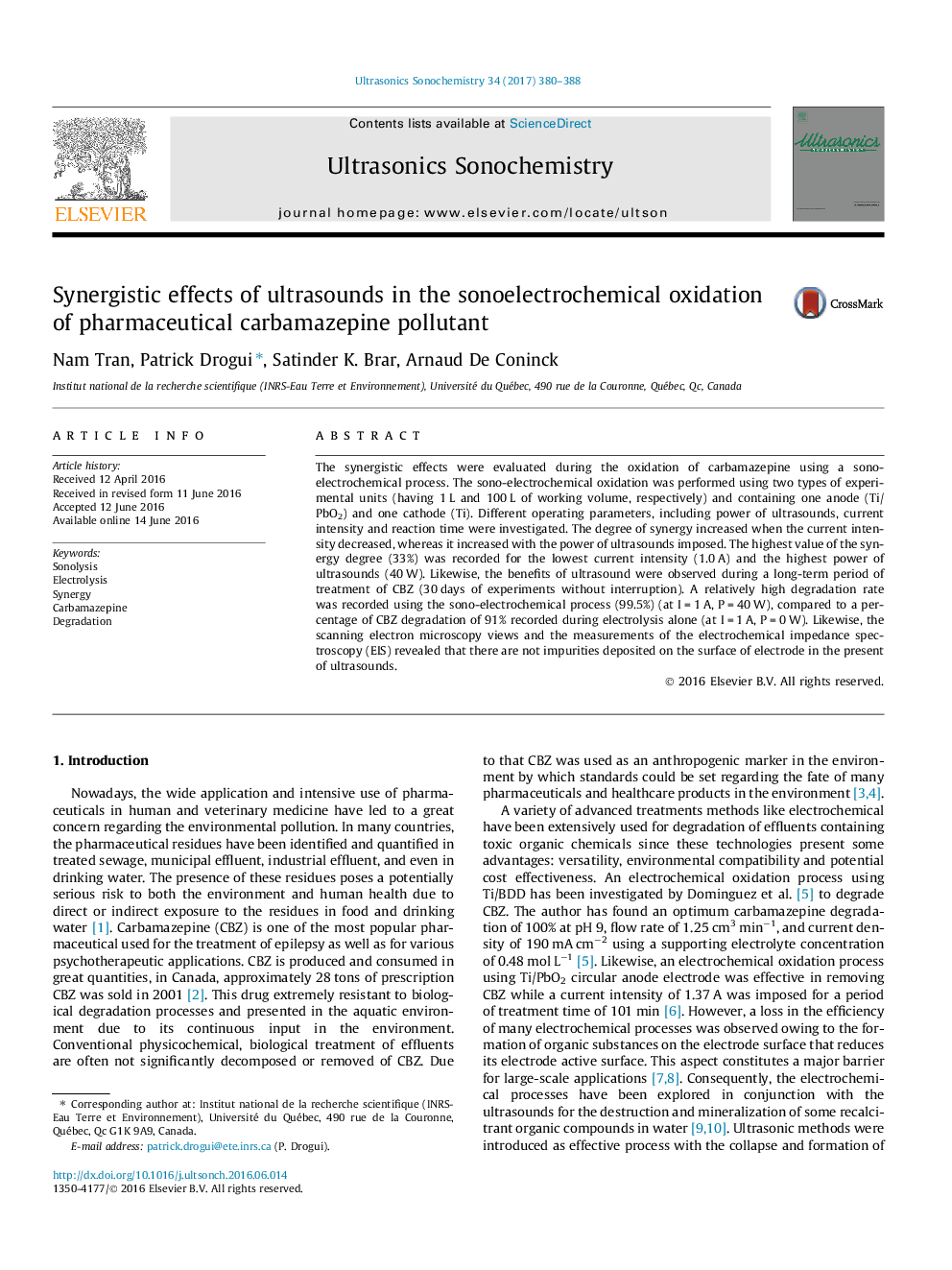| Article ID | Journal | Published Year | Pages | File Type |
|---|---|---|---|---|
| 7703692 | Ultrasonics Sonochemistry | 2017 | 9 Pages |
Abstract
The synergistic effects were evaluated during the oxidation of carbamazepine using a sono-electrochemical process. The sono-electrochemical oxidation was performed using two types of experimental units (having 1Â L and 100Â L of working volume, respectively) and containing one anode (Ti/PbO2) and one cathode (Ti). Different operating parameters, including power of ultrasounds, current intensity and reaction time were investigated. The degree of synergy increased when the current intensity decreased, whereas it increased with the power of ultrasounds imposed. The highest value of the synergy degree (33%) was recorded for the lowest current intensity (1.0Â A) and the highest power of ultrasounds (40Â W). Likewise, the benefits of ultrasound were observed during a long-term period of treatment of CBZ (30Â days of experiments without interruption). A relatively high degradation rate was recorded using the sono-electrochemical process (99.5%) (at IÂ =Â 1Â A, PÂ =Â 40Â W), compared to a percentage of CBZ degradation of 91% recorded during electrolysis alone (at IÂ =Â 1Â A, PÂ =Â 0Â W). Likewise, the scanning electron microscopy views and the measurements of the electrochemical impedance spectroscopy (EIS) revealed that there are not impurities deposited on the surface of electrode in the present of ultrasounds.
Related Topics
Physical Sciences and Engineering
Chemistry
Chemistry (General)
Authors
Nam Tran, Patrick Drogui, Satinder K. Brar, Arnaud De Coninck,
